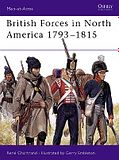
by Franciso Goya
This painting commemorates the Spanish people's rising against the invading French army. I think it points to the grimness of the situation and the bleakness of Goya's outlook that this swirling, stabbing, stamping melee is the most presentable of his war pictures. Any one wishing to fully understand what a jolly chap he was should investigate
here.
As any regular reader of this blog well knows, I've been on tenterhooks awaiting the new Spanish expansion for Command & Colours Napoleonics. While hither to fore I've always held that the Peninsular War was a purely Franco-British affair, I have come around to the understanding that Johnny Spaniard may have taken a hand now and then.
I've already begun mustering forces for my Spanish armies, but I was handicapped somewhat by the fact that while I have a rough idea of what the Spanish army presented in the scenarios will look like, I had no exact information. But thanks to Tony Curtis at GMT games, I now have an exact block count, which will make the job of raising the appropriate units all the easier.
Spanish Units
Line Infantry - 12 units (48 blocks)
These should present no problem, I'll use my HAT Guerrillas for the time being supplemented by Falcata chaps in bicornes. Anyone short of Spanish infantry can look forward to what looks like a real treat; HAT have a line infantry set that looks splendid indeed.
Light Infantry - 3 units (15 blocks)
I shall have to go scurrying to my Osprey to find out what Spanish light infantry look like, but I should knock at least one unit out the Valencian kilt wearing light bobs in the HAT Spanish Guerilla set. Dressing all one's light infantry in skirts might excite some comment.
Grenadier Infantry - 2 units (8 blocks)
Clive is sorting me out with some Falcata Spanish Grenadiers. Great big hats with massive bags on them and mustaches that would make Tom Selleck feel inadequate. Capital fellows, the grenadiers.
Militia Infantry - 3 units (12 blocks)
I have a motley assortment of HAT Spanish Geurillas, they'll cut a dash before they cut and run.
Leaders (4 blocks)
I have two mounted Spanish officers from Falcata sets, so that's a start.
Light Cavalry - 7 units (21 blocks)
So far as I can make out, the Spanish fielded a variety of hussar units. I think I shall have to look at the Zvesda Prussian hussars as a possible match, this will require further study.
Heavy Cavalry - 5 units (15 blocks)
I'll use dragoons for these, probably HAT Prussian 1806 dragoons with bicorne.
Cuirassier Heavy Cavalry - 1 unit (3 blocks)
I know that there was a squadron of Spanish guerilla cavalry that used captured French cuirrassier kit. Depending on what scenario they appear in, I'll have to look into this further.
Foot Artillery - 3 units (9 blocks)
I have no clue what I shall use for these fellows.
French Units
Line Infantry - 4 units (16 blocks)
I have more French infantry than I could shake a very large stick at, so I can't think I'll need some more. Unless these fellows are German allies or something.
Grenadier Infantry - 2 units (8 blocks)
Uwe had some lovely French grenadiers on his blog recently. They were Guard Grenadiers, but a fancy hat is a fancy hat.
Light Cavalry - 2 units (8 blocks)
I don't have any proper French hussars, which is a problem - though it would be fitting to have the two regiments from Conrad's "The Point of Honour" on the strength.
Light Lancer Cavalry - 1 unit (4 blocks)
At last, I get to use my Zvezda Poles. It seems a shame that there is only one unit.
Heavy Cavalry - 4 units (16 blocks)
Dragoons, dragoons and then more dragoons. It seems only fair as they did the bulk of the French horse work in Spain. The Italeri set has yet to be bested.
Guard Light Cavalry - 2 units (8 blocks)
I have no idea what to use for these chaps as I am always clueless about the Guard. Off to check the Osprey I think.
I really am greatly pleased by this information. I think the Spanish cavalry are the most pressing concern, but I should be in good shape by the time the expansion comes out.
Three cheers for Tony and GMT games!


































































